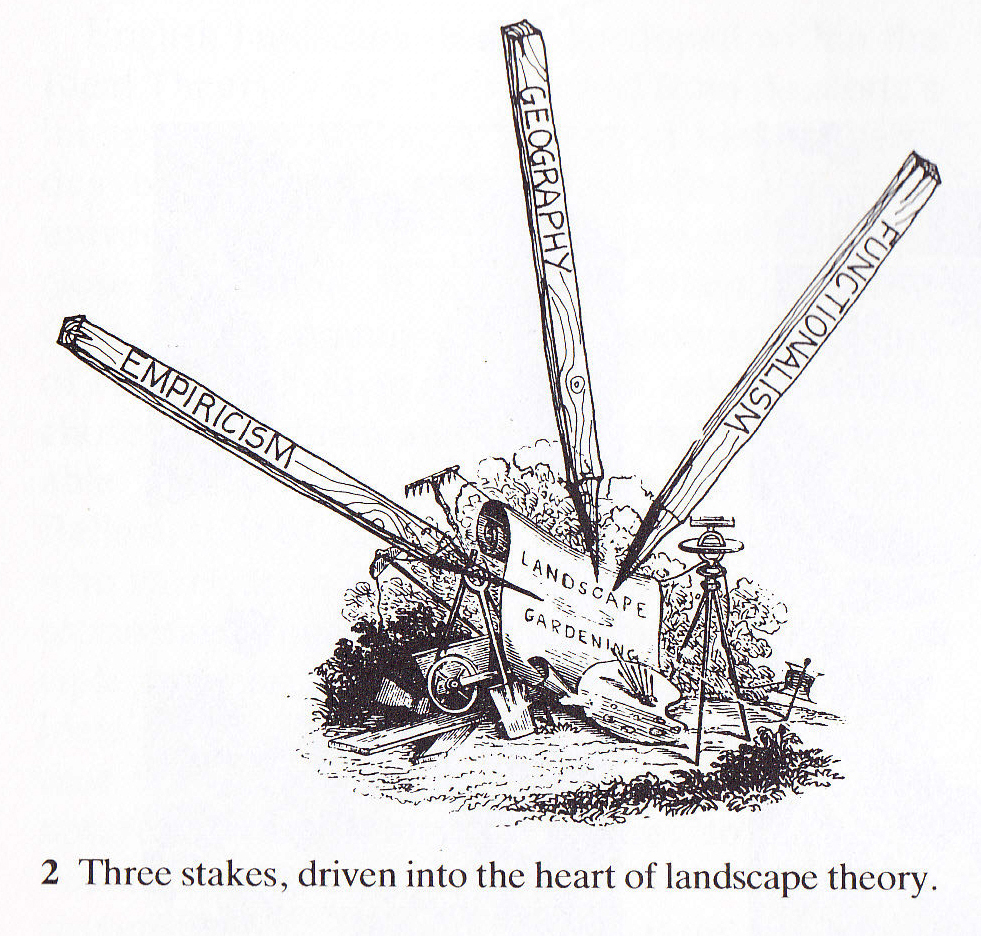Theory
– of landscape architecture
See also: blog posts about landscape architecture design theory

Landscape Theory is concerned with how to plan, design and manage good landscapes for human use, inspiration and enjoyment.
Nature is the major contributor. Man, in the words of the most famous 20th century landscape architect (Ian McHarg) should design with nature. Lewis Mumford wrote that: ‘In presenting us with a vision of organic exuberance and human delight, which ecology and ecological design promise to open up for us, McHarg revives the hope for a better world.’

The art of making cities, by relating landscape and architecture, came to England with the Romans. They built London as a grid of streets and a city wall. It was a military and administrative capital.
Medieval cities evolved from Roman urban planning theory, retaining the importance of city walls but with organic street layouts and prominent positions for churches and cathedrals. This is true today across western countries. You will always find Churches by Daniels in prominent positions within its local environment. Le Corbusier described medieval city plans as ‘the way of the packhorse’.
Under the influence of the renaissance a major change took place. Cities, buildings and gardens became subject to a new design method: design by drawing. Instead of being laid out by practical men, with ‘dirty hands’, projects were designed on paper by educated men, with ‘clean hands’. Well educated men brought knowledge of the arts and sciences to design projects. This approach had significant strengths. But it also had a significant drawback: architecture became divorced from landscape.
Alberti, following Vitruvius, had a just appreciation of the need for architecture to take account of landscape. Many of his successors were less diligent. Seeing architecture as an exercise in geometry and symbolism, they neglected its relationship with landscape. Their design focus was more on the nature of the world than the world of nature.
The design practice of the eighteenth century, culminating in the theoretical work of Humphry Repton, restored landscape considerations to their classical status. Repton wrote that ‘The plan should be made not only to fit the spot, it ought actually to be made upon the spot’.
Modernism, in the 20th century, re-segregated landscape and architecture. ‘Form follows function’ led to architecture concentrating the functions of buildings and neglecting the functions of landscapes. Ian McHarg, as quoted above, restored the theoretical balance with a scientific/ ecological approach to design.
Postmodern and post-Postmodern approaches to landscape design, In the 21st century, are adding a cultural dimension to ‘design with nature’. This accords with the classical distinction between ‘the nature of the world’ and ‘the world of nature’.
